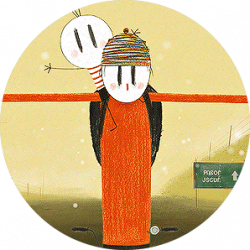An overview of the 12 Principles of Animation
In the last century, Disney animators invented the 12 principles of animation. The principles have now become widely recognized as a theoretical bedrock for all artists working on animated video production. Understanding and practicing these principles not only helps us create animations, but also makes our animations more attractive and dynamic.
1.Squash and Stretch
In nature, apart from rigid bodies such as iron balls, stones, and so on, other objects or life bodies in collision with other objects or self-movement will produce deformation phenomenon, that is, squash and stretch. By exaggerating this natural physical phenomenon, the object looks more elastic, quality and vitality, thus obtaining a unique interest and drama in the animation world.
2.Anticipation
The intention of the anticipation is two: firstly, to attract the attention of the audience, to prepare the audience to see the character’s physical performance, so as not to miss the storyline; secondly is to accumulate the kinetic energy needed for the action.
The direction of the preparatory action is often the opposite of the approach of the active action.
The preparatory action does not have to be wildly exaggerated, but can also be very delicate.
Exaggerating the performance of the preparatory action, it goes far beyond what can be achieved when designing subsequent actions. And if you see the exact opposite of what you predict when the audience prepares for the move, you’ll have the amazing effect.
3.Staging
‘Staging’ is one of the most commonly used principles in animation, control through the performance layout to achieve all elements of the scene to work together to move the audience viewpoint, if the performance layout is bad, the characters are in the mirror, the audience will not know which to look at. Therefore, in the animation of all the action arrangement, composition, mirror, movement, position needs careful design, arrangement, to avoid too many trivial actions and changes at the same time. The most important thing is to carefully design every lens and action, after the design, not only can make the animation better overall, but also save a lot of unnecessary cost and waste.
4.Straight Ahead Action and Pose to Pose
Straight Ahead Action and Pose to Pose is the way of operation defined by 2D hand-drawn animation. In simple terms, Straight Ahead Action is drawing one by one from scratch, while Pose To Pose is the key action in the show, which we call key Pose, and then connects key Poses in a cut-in fashion. Both approaches have their advantages and disadvantages, which are not repeated here.
In terms of 3D animation, we mostly work based on Pose To Pose, but for this reason we should especially avoid rigid performance dynamics. Ideally, the two approaches are combined, which we’ll cover in future lessons.
5.Follow Through and Overlapping Action
Follow through refers to the physical phenomenon of natural fluttering or delayed movements such as animal ears, clothing, hair, etc. Under the unconscious control of the character.
Action overlap refers to the time difference between the various parts of the character’s limb during the performance action.
In short, these two points are the most important concepts of activating animated characters.
6.Slow-in and Slow-out
Newton’s first law of motion states that any object must remain in a constant linear motion or still state until external forces force it to change its motion. However, the reality of objects has the effect of force, such as the car start, from stationary gradually accelerate to speed on the road, and then gradually slow down until the brakes. The “Slow In and Slow Out” rule of fade-in and fade-out refers to the fact that almost all movements start slowly, then accelerate, and end slowly. This is one of the important principles for realistic motion, and it makes things look mechanized without getting faster and slower.
7.Arcs
The movement of critters (humans, animals, birds, fish, etc.) and many other objects occurs not in a straight line but in an arc. Imagine a pendulum whose motion reflects an exact arc. The same applies to the hands, legs, head, and body as a whole. A perfect example is walking. Pay attention to how to move your feet. You start lifting and moving your feet at the same time, ending with a lower and a complete stop. Your feet make an arc motion. Your pelvis also moves in arcs. When you throw a ball, your arm moves in an arc, and the fly ball moves in the same arc. It will appear more natural and attractive in the animation arc motion.
8.Secondary Action
Secondary performance action is the extra physical performance action outside the main activity that helps express the character’s inner state or personality. For example, if a character taps his finger on the table while talking to someone else, he may reveal the character’s impatience. Proper secondary action can make the character more live.
9.Timing
A good ‘Timing’ means looking vivid, funny, natural speed, and of course, considering whether the performance fits at this time of spacing. So timing is what animators have been looking for over the years.
Timing’s other explanation is rhythm, which can be said to be inseparable from all art. A song with rhythmic changes will be good to hear; similarly, a movement with fast and slow changes in this action will be comfortable and interesting.
10.Exaggeration
By means of exaggeration, we can achieve greater expression, precision, more dynamic poses, and motions. Not only primary lines of a character can be exaggerated, but also his personal traits, his behaviour, condition, his motions, etc. Exaggeration is one of the most common parts of the animation, and the soul of animation can make the animation look more powerful and interesting. But exaggeration does not mean more contempt, but more convincing.
11.Solid Drawing and Solid Posing
Vivid, interesting, and natural character gestures are one of the elements of good performance. Your personality, posture should be clear and expressive, and silhouettes are easy to read. Adhere to an exact shape, observe the centre of gravity; weight should be evenly distributed. Posture should clearly express a character’s thoughts, intentions, conditions, desires, and feelings.
12.Appeal
Appeal means acting in a way that matches the character’s personality, with heroes acting like heroes, fools acting like fools, bad guys performing hateful things, and in short, ‘playing what, like what.’ Our animated characters should have unique personalities and appearances that appeal to the audience. Whether the audience will be impressed when they see the character’s performance often depends on whether the animator has anything unique in the design, whether the expression is rich in change, whether the action performance is dynamic and so on, and all the elements that can catch the audience’s eye.


